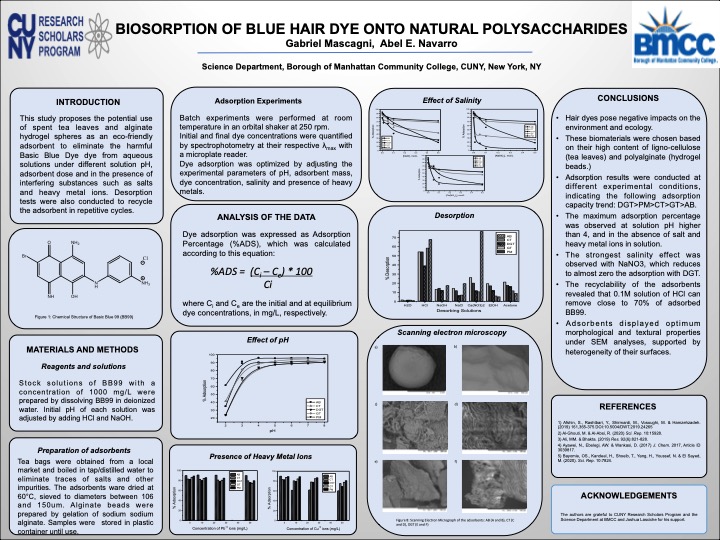Author: Gabriel Mascagni
Mentor: Abel Navarro
Institution: BMCC
Abstract:Hair coloring industry grows with the demand for cosmetics and personal care products. Dyes pose negative effects in human health, the biota, and the environment. Different biological wastes and hydrogels were used as adsorbents for Basic Blue 99 (BB99) dye from solutions. Chai tea (CT), decaffeinated green tea (DGT), green tea (GT), peppermint (PM) and alginate hydrogel spheres (AB) were tested for the removal of BB99 in batch assays at room temperature. The adsorption of BB99 followed the trend: DGT>PM>CT>GT>AB and was strongly affected by the pH, presence of salts and other heavy metal ions. The adsorption was modeled according to the Langmuir, Freundlich, Temkin and Sips isotherms, indicating a maximum adsorption capacity of 425 mg/g at pH>4. Diluted solutions of HCl desorbed up to 70% of the dye from the adsorbents. Thermogravimetric analyses and electron microscopy verified the appropriate textural and mechanical properties of these adsorbents. Therefore, spent tea leaves and hydrogels have potential for the removal of BB99 dye from wastewaters.
Biosorption of Blue Hair Dye onto Natural Polysaccharides



